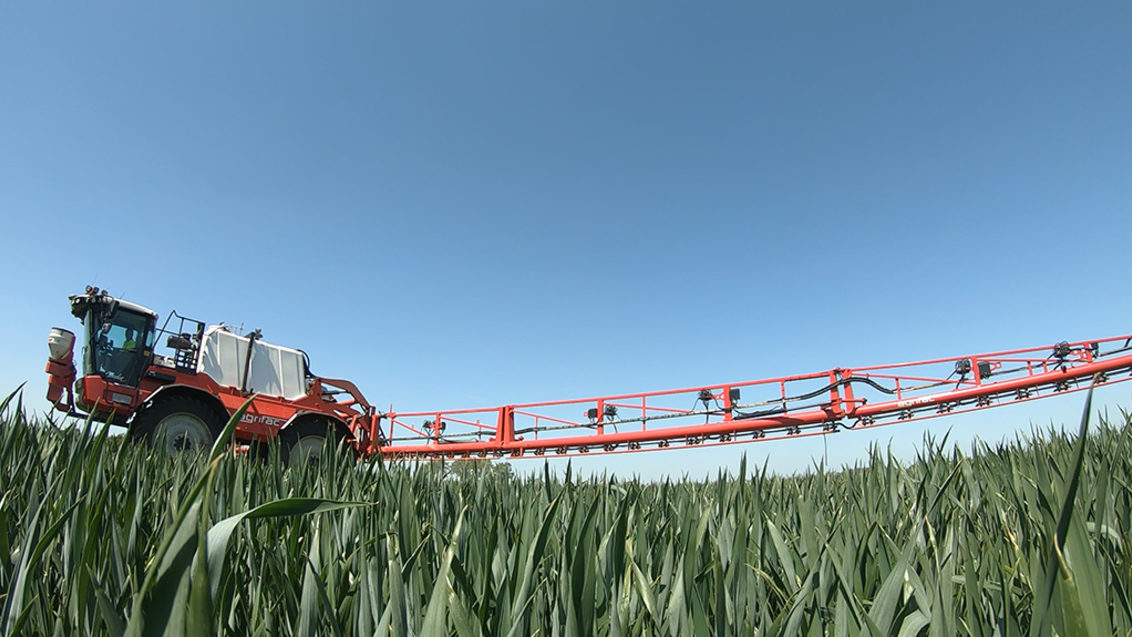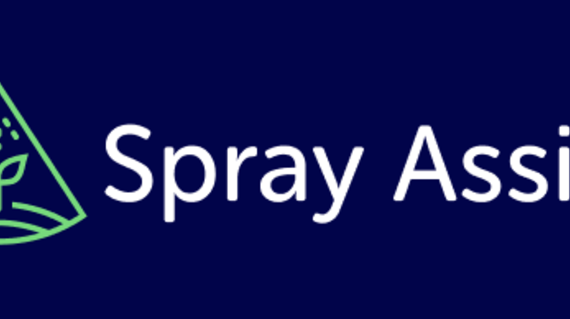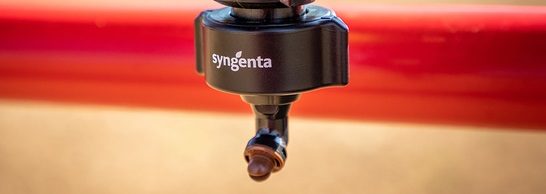
Cereals application
Herbicides
With pre-emergence sprays there is only one target – the ground. An even distribution of the spray liquid is the aim. Patchy weed control most usually comes from patchy application, due to the wrong choice of nozzle and drift.
Fine sprays are important for retention on difficult to wet grass weed leaves such as wild oats and black-grass. For a given volume of liquid, when the drop size is halved, the number of drops produced goes up by a factor of eight, and the coverage of a flat area of leaf or ground may be up to four times greater. So where the target is very small, a fine spray will greatly increase the chances of hitting it.
Fungicides
Cereals present a tall, thin target. Bigger spray droplets penetrate better into the canopy than fine mist, which is either dragged in by turbulence or drifts away. Typically, a standard fan-jet puts half the spray on the crop at GS30/31, the other half is available for weed control, or is wasted to the ground. Nozzles can be selected to suit different application targets.
Low drift nozzles have proven very effective and good results from air induction nozzles can be expected. The AMISTAR nozzle has been specifically designed to achieve the best results with fungicide applications – providing the ideal spectrum of droplet sizes. Syngenta cereal fungicides are robust and work well when applied as coarse sprays and at reduced volumes.
| Timing | Water volume (l/ha)* | Forward speed | Best nozzle | Reduced drift option |
|---|---|---|---|---|
| Pre-em herbicides | 200 l/ha | <12 km/h |
3D ninety – alternating forwards and back |
3D ninety – alternating forwards and back |
| Post-em herbicides | 100 and above | <12 km/h | 3D nozzle all forwards or alternating forwards and back | 3D nozzle (worst case Amistar nozzle) |
| Spring wild oats <GS30 | 100 and above | <12 km/h | 3D nozzles | AMISTAR nozzle |
| Spring wild oats >GS31 | 100 and above | <12 km/h | AMISTAR nozzles | 3D ninety |
| Fungicides T0 | 100 | <12 km/h | 3D nozzles | AMISTAR nozzle |
| Fungicides T1-T2 | 100 | <12 km/h | AMISTAR nozzles | AMISTAR nozzle |
| Fungicides T3 | 100 | <12 km/h | 3D nozzle alternating forwards and back | AMISTAR nozzle |
*Please refer to the product label for water volumes. Growers can reduce water volumes as long as they adhere to the HSE/DEFRA Code of Practice for Using Plant Protection Products. Please refer to paragraph 4.6.4, page 81 of the HSE/DEFRA Code of Practice for Using Plant Protection Products.
2023 recommended pre-emergence nozzles
| Nozzle | Water volume (l/ha) | Pressure (bar) | Speed (kph) | LERAP rating | Drift reduction rating | Comments |
|---|---|---|---|---|---|---|
| 3D nozzle | ||||||
| 3D 83-06 | 200 | 2.1 | 12 | *** Up to 1.0 bar (alternating fwd & bkw) | N/A | Ideal spray conditions ONLY. Low pressures under LERAP conditions |
| 3D 83-05 | 200 | 2.1 | 10 | N/A | N/A | |
| 90% drift reducing nozzle | ||||||
|
Syngenta 3D ninety 80-05 |
200 | 2.0 | 10 | **** Up to 5.0 bar | 90% up to 5.0 bar | Top recommendation for 90% drift reduction and good efficacy |
| Lechler ID120/03 | 100 | 2.1 | 12 | *** Up to 8.0 bar | 90% | Delivers 90% drift reduction at 100 l/ha |
Ongoing trials work allows us to continually update our best application advice to fit with the changing agronomic and environmental landscape. The Syngenta 3D Nozzles still remain a class leading nozzle for efficacy against grassweeds, however their drift reduction operating pressures are low, therefore in sub optimal conditions, a drift reduction nozzle with higher operating pressures should be used. We have seen that Drift Reduction Nozzles can also offer the same level of controls as the 3D.
If using 3D Nozzles, it is important to choose a Nozzle with a larger orifice size which will allow you to apply higher water volumes with coarser droplet to minimise drift.
In ever more challenging grass-weed conditions 200 l/ha has been shown to give better results, compared to 100 l/ha that had previously worked effectively.
Click here for more information and advice about pre-emergence application

